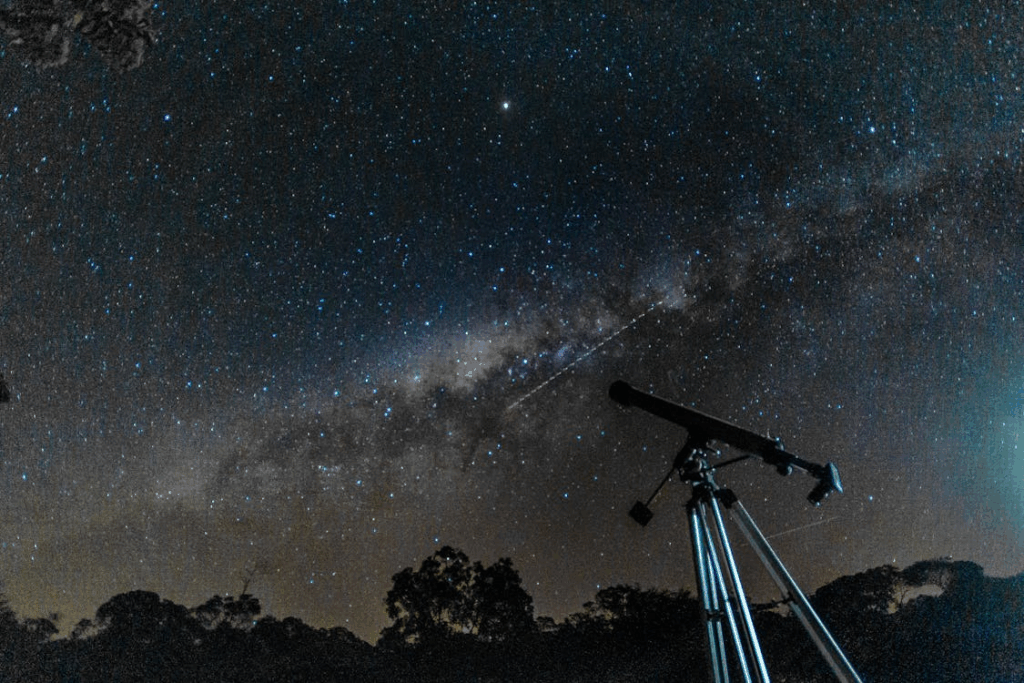You glance up at a bright afternoon sky and notice the Moon, pale, ghostly, and surprisingly visible. It’s a sight so common we rarely question it, yet it seems like it shouldn’t be possible.
If the Moon “belongs” to the night, why can we see it shining in daylight? The answer lies in orbital geometry, brightness, and the way Earth’s atmosphere scatters light.
The Moon Is Always There—Day and Night
The Moon doesn’t vanish when the Sun rises; it’s still orbiting Earth once every 27.3 days. As it moves, the Moon spends nearly half of each orbit positioned above the horizon during daylight hours. The only reason we associate it with night is that it’s easier to notice against a dark sky.
During the first and last quarters of its cycle, when the Moon is half illuminated, it’s often high in the sky during the day. Around the full moon, it’s opposite the Sun and primarily visible at night, while during the new moon, it’s near the Sun in the sky and hidden in its glare.
So, depending on its position relative to the Sun, the Moon is visible in daylight for up to two weeks of every month.
Explore Why the Sky Isn’t Actually Blue and how it paints the daytime backdrop.
Bright Enough to Outshine the Blue
The second reason we can see the Moon during the day is simple: it’s bright. The Moon reflects about 12% of the sunlight that hits it, a process that also makes the sky appear blue. While sunlight scatters shorter blue wavelengths through the atmosphere, the Moon’s broad-spectrum white light stands out because it’s concentrated in a small, solid shape rather than diffused across the sky.
This contrast allows our eyes to detect the Moon easily when it’s high above the horizon, especially in early morning or late afternoon when the Sun’s glare is weaker.
See Why Ice Floats but Rocks Don’t for another counterintuitive physics story.
The Geometry of Illumination
Daytime visibility also depends on angular separation, which refers to the distance between the Sun and Moon in the sky. When they’re too close (during a new moon), the Sun’s brightness overwhelms the Moon. When they’re far apart (half or gibbous phases), sunlight illuminates enough of the lunar surface for it to stand out clearly.
This alignment explains why you might see a half-moon during midday or a nearly full moon just before sunset. The Moon’s orbit constantly shifts its visibility window, creating a rhythm of day and night appearances that repeat each month.
Why the Moon Looks Different in Daylight
Daylight washes out most of the contrast between the Moon’s shadows and highlights, making its features, such as craters, seas, and mountains, appear softer and flatter. That pale, chalky tone isn’t a different moonlight; it’s the same light seen through atmospheric scattering and glare.
At night, without scattered sunlight competing, our pupils widen and the Moon’s reflected light looks sharper and more silvery. In truth, its color and brightness don’t change. The difference is entirely in how our eyes and the atmosphere filter it.
Learn Why Fireflies Glow (and What They’re Saying)to explore how light and chemistry create night wonders.
A Familiar Mystery in the Sky
The Moon’s daytime appearances remind us that the rhythms of the sky are continuous, not divided. Day and night are human categories; the cosmos continues to move regardless of how we label it.
Next time you see the Moon against the blue, take a second look. It’s a beautiful visual intersection of sunlight, geometry, and our planet’s atmospheric lensing, a quiet reminder that the universe doesn’t wait for darkness to reveal its wonders.




